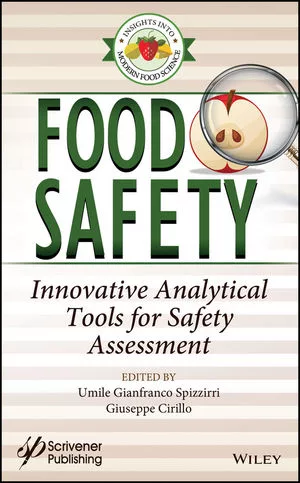CANNABIS PRODUCTS | JUNE 2019
How to select the right packaging for your cannabis product

Courtesy of Cannaline Custom Packaging

Courtesy of Cannaline Custom Packaging

Courtesy of Cannaline Custom Packaging

Courtesy of Cannaline Custom Packaging
The market for legal cannabis edibles has grown increasingly sophisticated—and that includes the packaging options used for retail and medicinal products.
Packaging that controls humidity is important when manufacturing edibles, because sweating can lead to condensation and mold. Cannabis edibles companies also must ensure that their packages are tamper-evident, child-resistant and within accordance of local laws.
Find more cannabis processing equipment and packaged goods at foodengineeringmag.com
“It is important to know the rules and regulations for the type of packaging that is required,” says Daizee Torres, customer service manager at Delta9Packaging, Oak Creek, WI.
Because these laws are constantly changing and there are no uniform national laws, businesses are forced to keep up with the perpetual regulatory tweaks being made to remain in compliance and to protect the safety and security of the general public.
For example, a medical-grade cannabis edible may require packaging produced in a clean room or at the very least a location that meets GMP standards, while the standard candy bar or gummy bear may just need food-grade packaging. Torres says this is not to say one has less value than the other, but depending on customer and application, packaging needs may vary.
“The location in which your product is being sold may affect packaging, as well. In many parts of Europe, cannabis is only legalized for medical use and the packaging must be medical-grade, as well,” says Torres. “And for items that are considered a controlled substance in their region, we provide consulting services on the current and correct warning labels and government compliance verbiage.”
Additionally, Torres says the only difference between packaging for products billed as containing “hemp” vs. “cannabis” ingredients is often the compliance language required on the package. “Hemp currently has less regulation in the U.S. and Canada.
Looking for quick answers on food safety topics?
Try Ask FSM, our new smart AI search tool.
Ask FSM →
Even though the plants are identical from a botanical perspective, products can use “hemp” product descriptors if the ingredients were derived from industrial hemp and the THC level is very low or non-existent. Again, it is important to know the product, as well as the local regulations.
Safety First
Packaging for edible cannabis products has several important criteria, says Arnold Heckman, president, Cannaline Custom Packaging Solutions, Elkridge, MD. “First and foremost, it has to be produced from food-grade material. Functionally, it has to keep the product fresh. And finally, in most jurisdictions it needs to be child-resistant and tamper-evident,” he says. “Flexible packaging works particularly well for edibles in that it meets the first two elements, but the challenge is making it child-resistant.”
Heckman says that Cannaline’s child-resistant single-use bags are fully approved under the Consumer Product Safety Commission and fulfill the requirements for Poison Prevention Packaging under CFR Title 16, Part 1700.
“We take child-resistant packaging very seriously,” says Heckman. “A passing grade under federal standards is 80 percent, which allows for a 20 percent failure rate. Cannaline child-resistant bags passed 100 percent without a single failure.”
Heckman notes that although there are a number of child-resistant flexible packaging solutions, many can be difficult to fill without getting food in the internal zippers due to their complex configuration. They can also pose challenges for some cannabis consumer demographics. “Most are difficult for seniors to open, and require printed instructions on the bag that take up valuable real estate that is better used for branding and marketing.”
Flexible packages can be made tamper-evident by heat sealing, but Heckman notes that this does add another step in the production process and adds more complexity for the end user to open since tear notches are generally not used for child-resistant applications.
“We approached our newest child-resistant design from a different perspective by making a bag that uses a separate closure that attaches after the bag is filled and, by design, has a built-in tamper-evident feature that requires no additional heat sealing,” says Heckman. “To our knowledge, we have the only built-in tamper-evident bag available. Additionally, in testing, seniors found it easy to open, and the closure can be removed by the end user if child-resistant functionality is not needed.”
 Sensi Products is rolling out new California-compliant packaging for its Sensi Chew cannabis-infused chocolate caramels that is pharmaceutical grade, child-resistant and includes an informational insert to improve the user experience. The new packaging addresses all the necessary state requirements, while also positioning the products for transition to mass market adoption when the legal market expands to traditional retail pharmacies. The new packaging and automated manufacturing process will enable the company to meet the growing market demand for cannabis edibles.
Sensi Products is rolling out new California-compliant packaging for its Sensi Chew cannabis-infused chocolate caramels that is pharmaceutical grade, child-resistant and includes an informational insert to improve the user experience. The new packaging addresses all the necessary state requirements, while also positioning the products for transition to mass market adoption when the legal market expands to traditional retail pharmacies. The new packaging and automated manufacturing process will enable the company to meet the growing market demand for cannabis edibles.
The company reports that it has invested in research on the role of cannabis in helping with sleep, pain and anxiety, and will be launching focused reports on the findings. This work has led to the launch of its Sensi Chew Insomnia product. “Our goal is to bring Sensi Chew Insomnia to the millions of people who struggle to sleep each night,” says Edic Sliva, CEO, Sensi Products.
Conversion Details
With a range of different bag converting machines, Delta9Packaging provides stand-up pouches, three-side sealed pouches and tubular bags. The package-making process at Delta9Packaging includes blown film extrusion and cast film extrusion. The blown film extrusion process creates a tubular film made from different polymer granules. In the extruder, the granules are melted together through friction and heat to make a homogeneous, viscous mass. This is blown into a tube by a ring-shaped nozzle. Passing through several rollers, a flat film is produced, which is then wound onto reels.
Cast film extrusion creates a flat film on chill-roll lines and calendar lines. In the extruder, the plastic granules are melted together through friction and heat to make a homogeneous, viscous mass. This is poured evenly onto a cooled roller through a flat nozzle. Passing through several rollers, a sheet of film is produced which is wound onto reels.
During the lamination process, at least two films are combined by using pressure and temperature. Laminated material has improved properties compared with the single films to provide maximum protection and an optimal product experience.
In the slitting process, the master reel is cut to the final width and length, in accordance with customer specifications. In the same process, the customized film is wound and prepared for shipping.
“Our bags preserve the quality of your products,” Torres says. “They are created from multiple layers of high-tech films with properties such as a humidity barrier, oxygen barrier, odor loss protection, and terpene and UV protection. The composition of our films also makes them puncture resistant to provide maximum protection and an optimal product experience. We also provide compliant childproof zippers.”
The company uses digital printing to create custom packages for their customers. “We work with the newest digital printing technology,” Torres says. “Our state-of-the-art HP Indigo 20000 with ElectroInk technology prints films faster and with high quality. With regard to design creativity, our digital printing opens up completely new opportunities for our customers—right up to personalization with texts, codes and images.” She also says that the company’s print guidelines contain all the important information to consider when creating print data.
“For Delta9Packaging, everything starts with the customer. Once we help them decide on the ideal films, designs and any necessary legal compliance information, the film layers are extruded, laminated, digitally printed, processed through the slitting machines and produced into the final pouch,” says Torres.
A wide variety of packaging options exists for this industry. Cannaline started with glass jars and then added small containers, flexible packaging for edibles and has continued to grow the line with packaging options that can all be custom printed, says Heckman.
Most of what Cannaline supplies has been custom configured specifically for cannabis products. “It involves a lot of design work, prototyping, testing of production samples, further modifying the designs and then full production and marketing,” Heckman explains. “We have a lot of firsts in cannabis packaging, and if imitation is the sincerest form of flattery, we are very flattered. Nearly all of our designs have been widely copied, and that continues to this day.”
Heckman notes that Cannaline supplies printed jars and custom-printed bags with low minimum order quantities, as well as fully compliant, tested and approved child-resistant bags. The company also supplies tamper-evident, resealable, child-resistant blister packs for the cannabis industry.
As the cannabis edibles market continues to grow, companies need to stay on top of the various packaging rules that apply to each product and distribution locale. “Packaging for cannabis and hemp is just like packaging in any other industry,” says Torres. “We must know the applicable laws for the region where the product is being sold and the optimal film solution for the product.”










